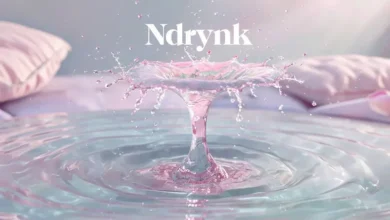Purple Betta Fish: What Makes This Rare Beauty So Special?

Introduction: Why Is Everyone Talking About the Purple Betta Fish?
The world of ornamental fishkeeping is filled with vibrant species, but few captivate the imagination quite like the purple betta fish. Known for its mystical appearance, graceful movements, and rarity, the purple betta has quickly become one of the most sought-after species among aquarists. But what makes this little creature so fascinating? Why is it so rare, and what should you know before bringing one home?
Let’s explore everything about the purple betta fish—its origins, care requirements, unique colors, and much more.
What Is a Purple Betta Fish?
The purple betta fish, also called a Siamese fighting fish, is a color variant of the Betta splendens species. These fish are renowned for their aggressive behavior, flowing fins, and brilliant coloration. However, the purple variety stands out due to its rarity and the elusive nature of its true coloration.
Many betta fish may appear to have purple hues, but truly deep purple bettas are extremely rare. Most purple bettas are technically a mix of blue, red, and iridescent tones that give the illusion of purple under certain lighting.
How Rare Is a True Purple Betta Fish?
Genuine purple betta fish are one of the rarest colorations in the betta world. Unlike more common colors like blue, red, or white, purple bettas require very specific genetic combinations that are difficult to reproduce.
While many breeders label their fish as “purple,” true violet or royal purple coloration throughout the body and fins without blending into other colors is very uncommon. This rarity significantly increases their value and desirability among collectors.
What Are the Different Types of Purple Betta Fish?
1. Purple Betta Fish Female
Female bettas typically have shorter fins and a slightly less vibrant coloration compared to males. However, a purple betta fish female can still display stunning violet tones, especially if selectively bred.
Female bettas are also less aggressive, making them suitable for sorority tanks (groups of females that can coexist peacefully under proper conditions).
2. Blue and Purple Betta Fish
This is one of the most common combinations mislabeled as “purple.” A blue and purple betta fish may display metallic or iridescent shades that shift under different lighting, giving the appearance of purple.
These fish are often bred intentionally for their mesmerizing appearance, even if they aren’t “true purple” genetically.
What Factors Influence the Purple Coloration?
Genetics
The primary factor in achieving a true purple betta is selective breeding. Specific genes control pigmentation, and breeders must selectively breed bettas with hints of purple over multiple generations to enhance this trait.
Lighting
Many bettas appear more purple under certain lighting conditions. Aquarium lights with high Kelvin ratings (close to natural daylight) often enhance purple hues.
Diet and Health
A healthy, protein-rich diet can intensify a betta’s coloration. Nutrients like carotenoids and spirulina, commonly found in high-quality betta food, help maintain vibrant scales.
Where Can You Find a Purple Betta Fish for Sale?
Finding a purple betta fish for sale isn’t as easy as visiting your local pet store. Because of their rarity, most are sold by specialized breeders, online platforms, or at aquatic expos.
Buyers should be cautious of mislabeled or photoshopped images. It’s essential to buy from reputable sellers who provide unaltered photos or even videos of the fish.
How Much Does a Purple Betta Fish Cost?
Due to their scarcity, purple bettas tend to be more expensive than standard bettas. Prices can range from $30 to over $150, depending on factors such as:
- Purity of the purple coloration
- Fin type (e.g., Halfmoon, Crowntail, Plakat)
- Breeder reputation
- Age and size
How to Take Care of a Purple Betta Fish?
While their color might be rare, caring for a purple betta fish follows the same guidelines as any other betta.
Tank Size
Despite their small size, bettas need ample space. A minimum of 5 gallons is recommended.
Water Parameters
- Temperature: 76–82°F
- pH: 6.5–7.5
- Water hardness: 3–5 dGH
- Use a heater and gentle filter for optimal living conditions.
Tank Setup
- Use plants (real or silk) for hiding spots.
- Avoid sharp decorations that may tear their fins.
- Include a lid, as bettas are jumpers.
Diet
Feed them high-quality betta pellets, frozen bloodworms, brine shrimp, and occasional daphnia.
Can You Keep a Purple Betta Fish With Other Fish?
Bettas, especially males, are known for their aggression. However, with careful planning, they can be kept in community tanks.
Compatible Tank Mates:
- Corydoras catfish
- Neon tetras (in larger tanks)
- Snails
- Ghost shrimp
Not Recommended:
- Other male bettas
- Fin-nippers like tiger barbs
- Guppies (males may mistake them for rivals)
How Can You Breed Purple Betta Fish?
Breeding for purple color is complex and not guaranteed. However, here’s a basic overview:
- Select a pair with purple or near-purple traits.
- Condition both fish with high-protein food.
- Introduce the female in a transparent container inside the male’s tank.
- After building a bubble nest, allow interaction.
- After spawning, remove the female.
- Male cares for eggs until hatching (2–3 days).
Note: Breeding bettas takes knowledge, patience, and proper resources to ensure fry survival.
What Are the Most Popular Fin Types Among Purple Bettas?
- Halfmoon: Fan-like tail that spreads 180 degrees.
- Plakat: Short-finned bettas with a more natural appearance.
- Crowntail: Fins that resemble spikes or combs.
- Double Tail: Two distinct tail lobes, often symmetrical.
Each type can appear in purple variations, although some are rarer than others.
What Are Common Health Issues in Purple Bettas?
Like all bettas, purple bettas can suffer from:
1. Fin Rot
Caused by poor water conditions. Look for frayed or blackened fins.
2. Swim Bladder Disease
Fish may float uncontrollably or sink. Often due to overfeeding or constipation.
3. Ich (White Spot Disease)
White spots appear on fins or body. Treat with aquarium salt and temperature elevation.
4. Velvet
Gold-dust appearance, loss of color and appetite. Needs prompt medication.
Maintaining clean water and a stable environment is key to preventing most illnesses.
Are Purple Betta Fish Good for Beginners?
Yes—with proper research. While their appearance is exotic, their care needs are not drastically different from other bettas. New aquarists should educate themselves on tank cycling, water testing, and behavior monitoring.
The biggest hurdle is acquiring a genuine purple betta, not its maintenance.
Why Are Purple Bettas So Popular on Social Media?
Platforms like Instagram and TikTok have exploded with stunning images and videos of purple bettas. Their vibrant color makes them extremely photogenic. Many influencers showcase these fish in aesthetic tanks, contributing to their popularity.
But this popularity also leads to misinformation, such as digitally enhanced colors or mislabeled fish, so viewers should be cautious.
What Should You Look For When Buying a Purple Betta?
- Color Consistency: Look for even, solid purple across the body and fins.
- Active Behavior: Healthy bettas should swim energetically.
- Clear Eyes and Gills: Avoid bettas with cloudy eyes or inflamed gills.
- No Fin Damage: Watch for torn or clamped fins.
Always quarantine new fish before adding them to established tanks.
Final Thoughts: Is the Purple Betta Fish Worth It?
If you’re looking for a fish that combines rarity, elegance, and personality, the purple betta fish is undoubtedly a top-tier choice. While finding a true purple specimen may take time and effort, the reward is a visually captivating pet that becomes the centerpiece of any aquarium.
Whether you’re a beginner or a seasoned aquarist, the purple betta offers not just beauty but an enriching and rewarding fishkeeping experience. blogvista.co.uk/



